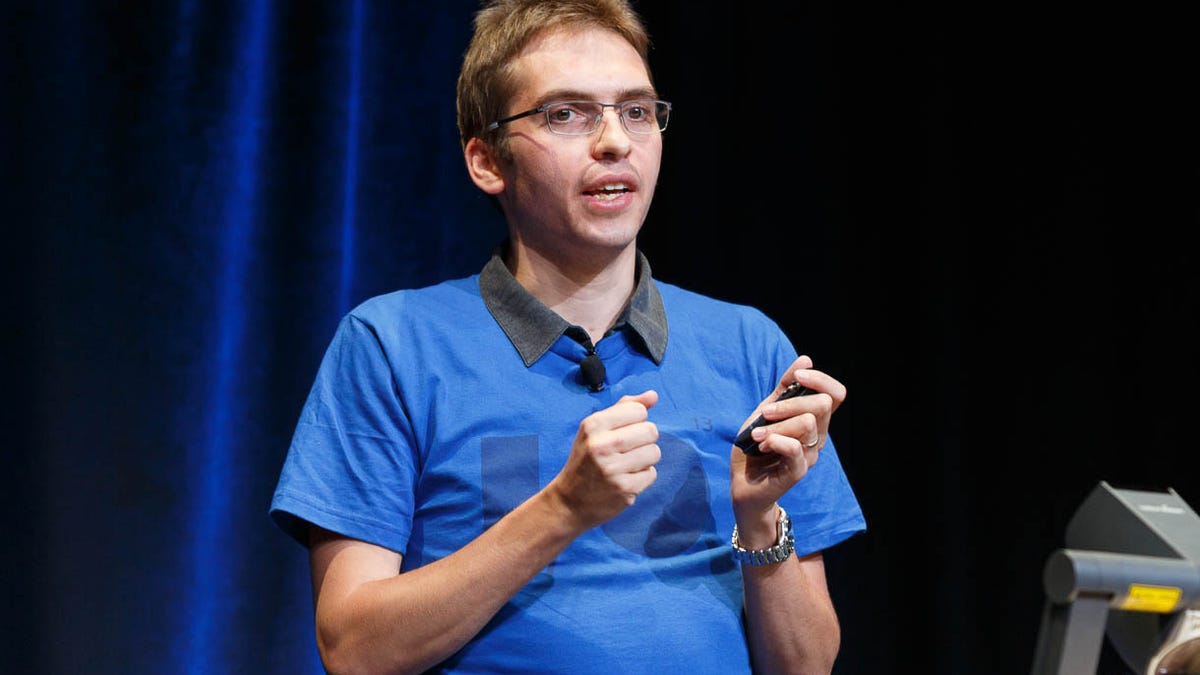Google urges fast adoption of VP9 video compression
The computing industry has just begun taking the VP8 codec seriously, but Google wants people to adopt its brand-new successor.

SAN FRANCISCO -- Google is nearly done with its VP9 video technology, and it wants the world to use it.
At its Google I/O conference Wednesday, company employees made the case for the royalty-free, open-source technology as a higher-quality alternative to today's dominant video codec, H.264. Moving to VP9 -- available now in testing on Chrome and YouTube -- will save bandwidth costs.
"If you adopt VP9, as you can very quickly, you'll have tremendous advantages over anyone else out there using H.264 or VP8, (its predecessor)," said VP9 engineer Ronald Bultje in a talk here at Google's developer conference. "You can save about 50 percent of bandwidth by encoding your video with VP9 vs. H.264."
The VP9 specification will be finalized on June 17, but developers can use it today by enabling it through Chrome's about:flags mechanism and visiting YouTube's VP9 video channel.
Halving network usage is a great incentive to adopt VP9, but there are a lot of caveats.
One problem is that Google is moving very fast. Software such as Web browsers on PCs can be updated rapidly, but it's harder and slower work to build hardware support into chips so mobile phones can decode video without crushing battery life. The industry barely has started coping with VP9's predecessor, VP8, which has been on the market for three years.
Another big issue is that VP9 isn't competing only against H.264, a codec that's about a decade old. It also must reckon with HEVC, aka H.265, a standard that's now complete and that has the potential to spread as widely as H.264.
Just as VP9 doubles the image quality over VP8 for a given number of bits per second -- the bit rate -- H.265 doubles the H.264 quality. Bultje said that H.265 image quality outperforms VP9 by about 1 percent overall, though there's a lot of variability from one video to the next, based on Google's tests so far.
But there's another big part of the VP9 sales pitch: no royalty payments. VP9 is free to use, unlike H.264. HEVC/H.265 also will be free to use once the licensing organization MPEG LA finishes up its patent royalty plans. Google sees that as an unacceptable financial burden for startups, programmers, schools, and others who might want to launch a video project on the Internet.
"We have to make sure they're not writing $5 [million] or $6 million dollar checks every year to standards bodies," said Matt Frost, senior business product manager for the Chrome Web Media Team.
MPEG LA, which licenses pools of patents on behalf of their owners, said VP8 violates 12 organizations' patents. Google disagreed, but to dispel the clouds, it hammered out a licensing agreement that clears away concerns from 11 of those companies. Nokia, though, has refused to cut a deal over VP8 patents, so some uncertainties remain.
Some VP8 techniques are used in VP9, and the agreement covers those usages, Frost said. However, it's not yet clear whether new patent infringement claims might surface with other techniques in VP9.
Google has a strong self-interest in VP8 and VP9: YouTube. Cutting network usage saves Google money, Frost said -- one of the motivations for Google's $123 million acquisition of VP8 developer On2 Technologies.
People watch more than 4 billion YouTube videos a day, Frost said, and the company streams more than 6 billion hours of video each month.
"With a codec as good as VP9, we can significantly increase the size of the Internet," Frost said. "We can significantly increase the speed of the Internet."
VP8 is at the heart of a video technology called WebM that Google unveiled three years ago at Google I/O.
VP9 and an audio codec called Opus both will be incorporated into WebM, Frost said.
Once Google finishes the VP9 bitstream specification in June, it will turn its attention to performance optimizations, such as software that speeds video encoding and decoding.
Google also plans to work on improvements for using VP9 in applications such as videoconferencing, which are sensitive to delays. That should arrive by the end of 2013, Frost said.
And hardware support should come sooner, likely the third quarter, when Google releases the designs that let chipmakers build it into processors for free.
And eventually, VP9 will become obsolete too. "We're going to have to turn to VP10 and keep on doing it," Frost said.

